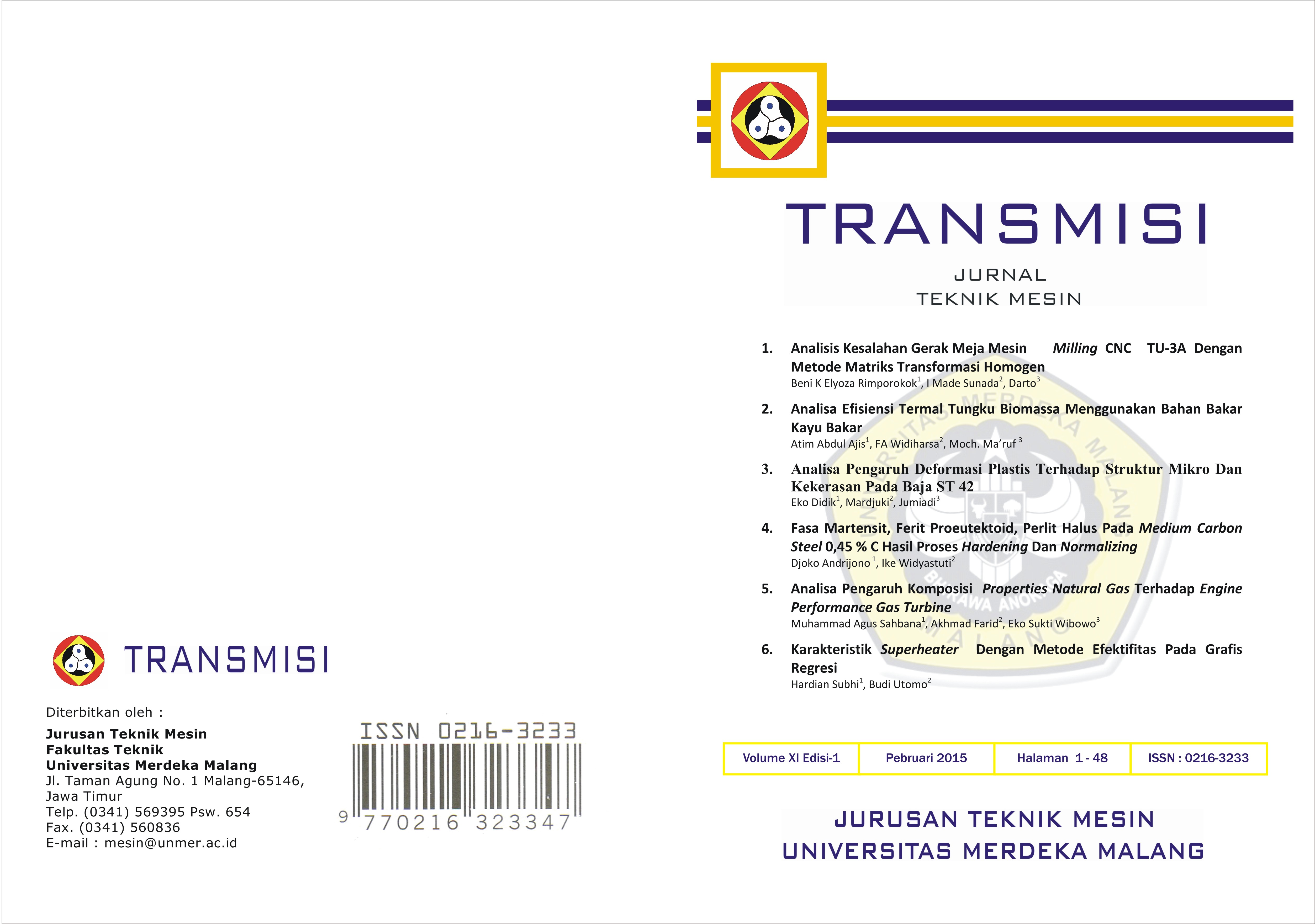ANALISIS KESALAHAN GERAK MEJA MESIN MILLING CNC TU-3A DENGAN METODE MATRIKS TRANSFORMASI HOMOGEN
DOI:
https://doi.org/10.26905/jtmt.v11i1.4500Keywords:
CNC, Matriks Transformasi HomogenAbstract
Dengan semakin meluasnya penggunaan mesin perkakas CNC pada industri permesinan di Indonesia. Maka perlu diketahui faktor- faktor yang berpengaruh terhadap kualitas produk yang dihasilkan. Faktor tersebut terutama menyangkut komponen mesin perkakas CNC. Dengan melakukan analisa kesalahan gerak mesin milling CNC TU-3A dengan metode tranparansi homogen yang dibandingkan dengan metode pengukuran. Dari penelitian yang dilakukan diharapkan dapat memberikan informasi kualitas dari mesin perkakas CNC yang di analisa. Apakah mesin perkakas yang bersangkutan masih dapat memenuhi kualitas produknya sesusai dengan standart pabrik pembuatnya.Downloads
References
Alat Ukur Linier, Laboratorium Metrologi Industri, Jurusan Teknik Mesin, ITB, Bandung
Bagiasna Komang, Pengantar Pengujian Geometri Mesin Perkakas, Laboratorium Metrologi dan Industri Jurusan Teknik Mesin, ITB, Bandung
Fridmen, Mair, Strabe9 A, 5400 Hiller, 1998, Petunjuk Pemerograman Pelayanan EMCO TU-3A, Austria
Rochim, Taufik, 1992, Spesifikasi Geometri Metrologi Industri dan Kontrol Kualitas, ITB, Bandung
Silalahi, Morlan, 1998, Kaji Awal Sumber Kesalahan Pemosisian Meja Machining Center Dengan Metode Matriks Transformasi Homogen, ITB, Bandung.
Downloads
Published
Issue
Section
License

This work, is licensed under a Creative Commons Attribution-NonCommercial-NoDerivatives 4.0 International License.
Authors who publish with this journal agree to the following terms:
- Authors retain copyright and grant the journal right of first publication with the work simultaneously licensed under a Creative Commons Attribution-NonCommercial-NoDerivatives 4.0 International License. that allows others to share the work with an acknowledgment of the work's authorship and initial publication in this journal.
- Authors are able to enter into separate, additional contractual arrangements for the non-exclusive distribution of the journal's published version of the work (e.g., post it to an institutional repository or publish it in a book), with an acknowledgment of its initial publication in this journal.
- Authors are permitted and encouraged to post their work online (e.g., in institutional repositories or on their website) before and during the submission process, as it can lead to productive exchanges and earlier and greater citation of published work.




